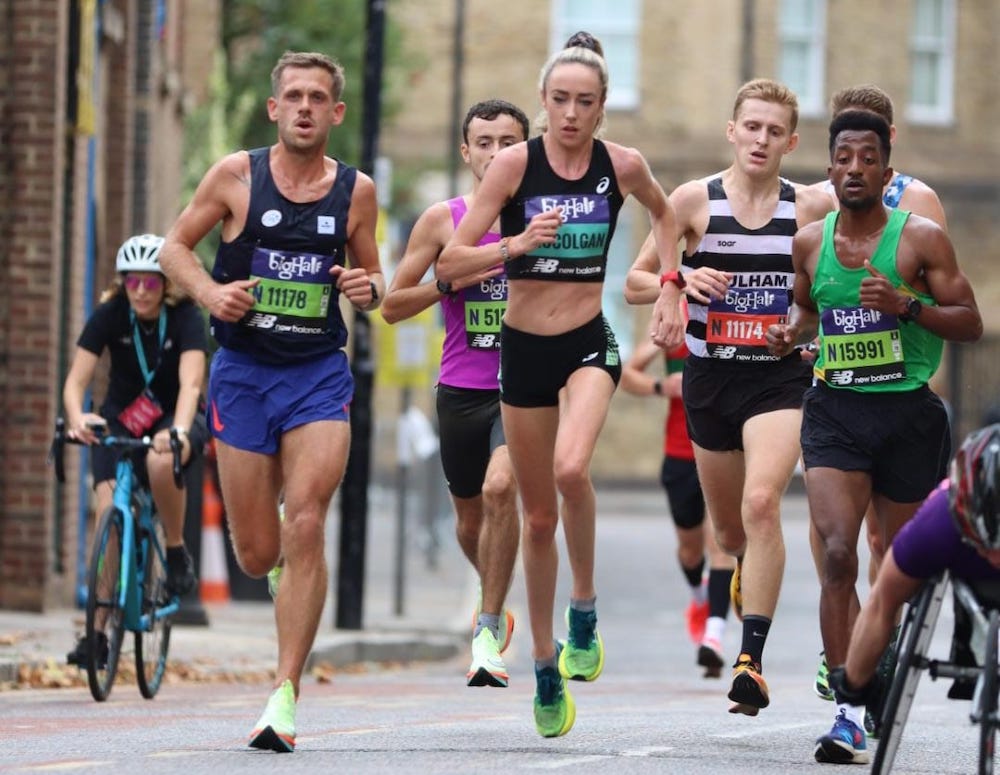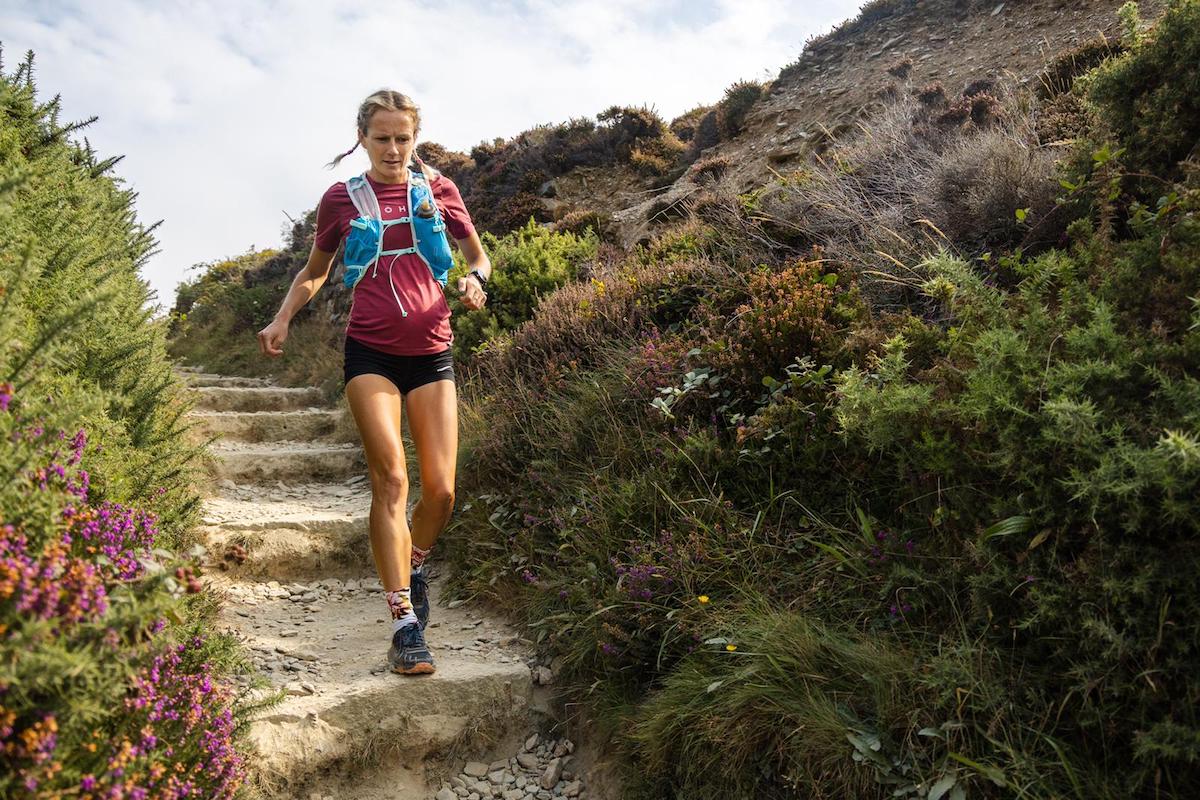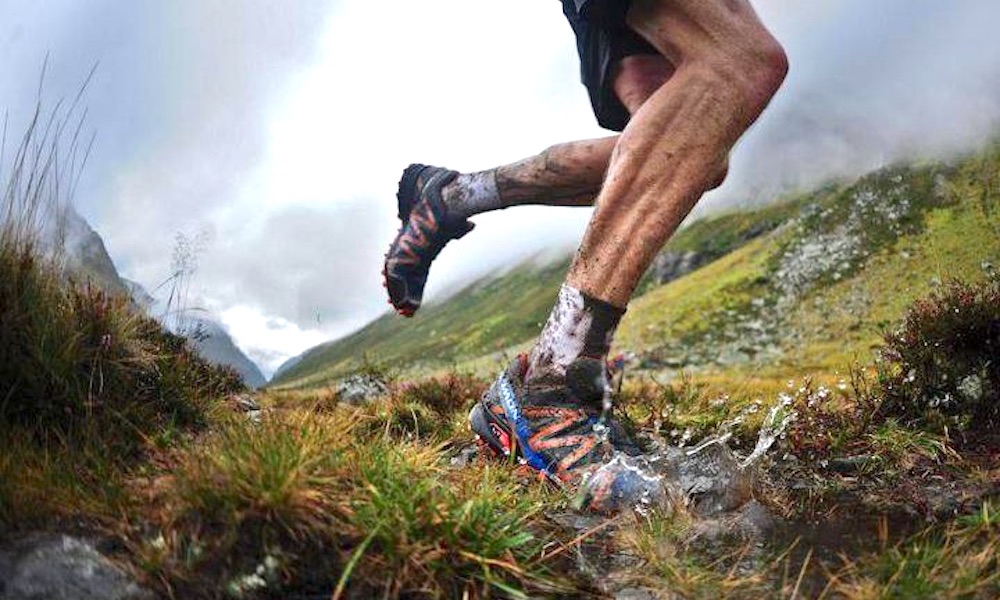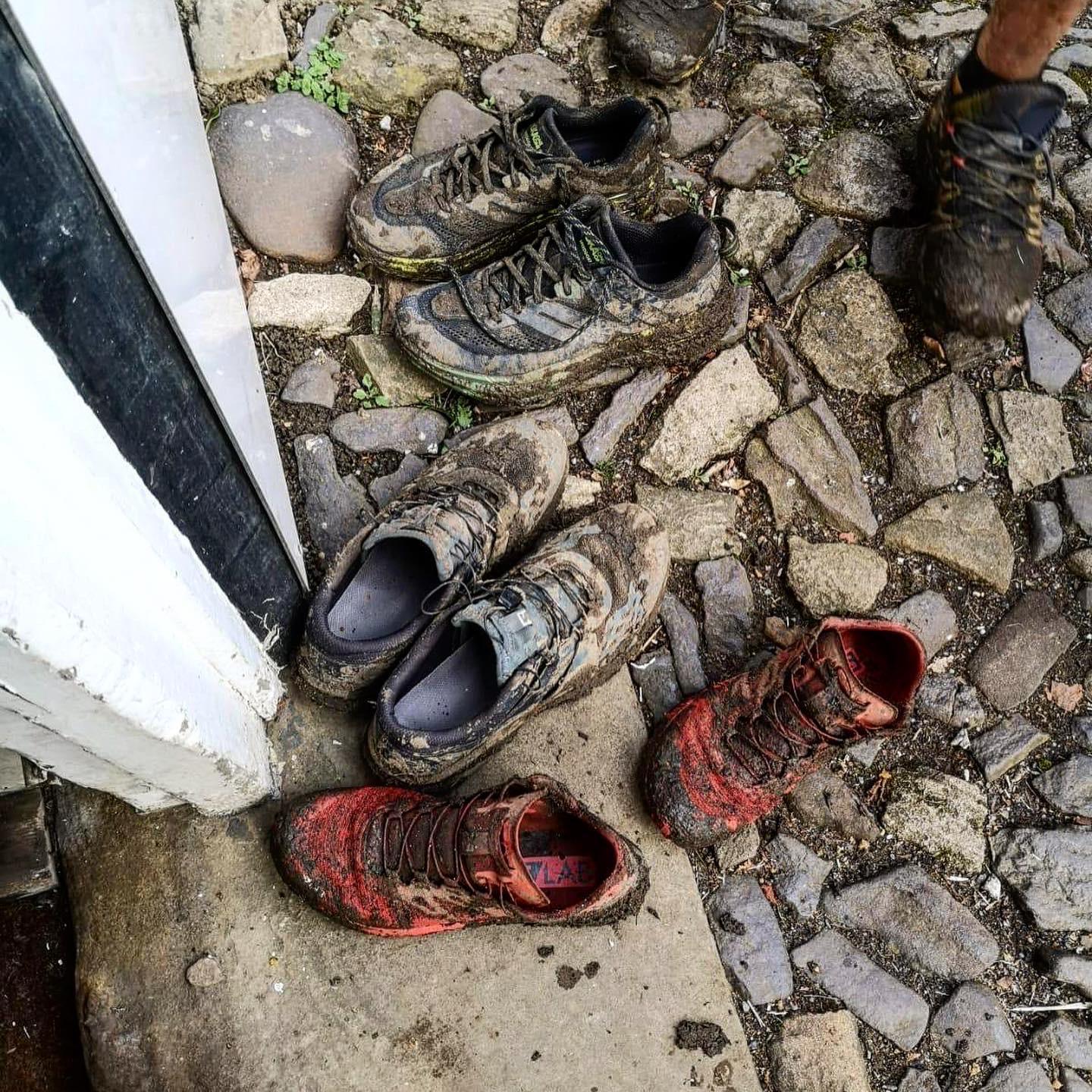
Vivian Kiplagat (KEN) (purple shoes) leads Brigid Kosgei (KEN) (white shoes) as they train together. Photo: Bob Martin for London Marathon Events
Let’s face it, running can be hard enough without having to worry about your feet. That’s why having a good pair of running shoes is crucial.
But with so many options out there, it’s enough to make your head bounce more than Paula Radcliffe wining the London marathon. Don’t worry, Fast Running is here to help. We’re your Prince Charming, finding the glass slipper that fits like a glove. Or a five fingered sock.
Here are some factors to consider when choosing your next pair of running shoes, so you can focus on what matters most: clocking those personal bests and beating the competition (or just getting through your daily run).

Photo: James Rhodes
Foot strike
Your foot strike refers to the way your foot hits the ground when you run. If you tend to land on the heel of your foot, you’ll likely do well with a shoe that has more cushioning. Whereas if you tend to land on the ball of your foot or your toes, a shoe with less cushioning and more responsiveness may be a better choice.
We’re not saying one way is better than the other (that’s a debate for another day) but knowing what kind of style you’re mostly using (it’ll vary throughout a race) might help guide with your choice of kicks.
The new carbon super-shoes from Nike, Adidas, ASICS and all the big brands provide a boost to so many runners, but they will force your to run in more of a fore foot striking style so consider what happens from your foot upwards with this change.

Credit: Dan Evans @sickofthecity
Running surface or terrain
The surface you’ll be running on can also impact the type of shoe you’ll need. If you’ll be running mostly on roads, you might want a shoe with good cushioning to help absorb the shock of the hard surface.
If you’ll be running on trails, on the other hand, you’ll want a shoe with more grip and stability to help you navigate uneven terrain. Then add in if you’ll be running in wet or slippery conditions, then you may want a shoe with a waterproof upper or some gnarly tread to make sure you stay rubber side down.
If you are looking for trail shoes then we recommend checking out the Centurion Running Store, who also do open days and appointment only visits to their bricks and mortar store for you to try a whole host of trail running kit on.

Going the distance
The distance you’ll be running can also affect the type of shoe you’ll need. If you’re training for a marathon or other long distance race, you’ll likely want a shoe with more cushioning to help prevent fatigue. It’ll soften those latter miles up a bit. If you’re just running shorter distances, a more lightweight, responsive shoe may be a good choice.
Another important factor to consider is durability. You’ll want a shoe that can withstand the mileage you’ll be putting on it and hold up to the wear and tear of your runs. Look for shoes with high quality materials and construction, as these are likely to last longer and perform better over time.
If you’re planning on running a lot of miles, it may also be worth it to invest in a shoe with a more durable outsole, as this is the part of the shoe that will take the most abuse.

Look after your kicks too, these shoes from Ry Webb have seen some good times and need plenty of love post run. Photo: Dirty Runners.
The personal and pricing factors
Ultimately, the most important factor in choosing a running shoe is what feels best to you. Different brands and models will have different fits and feels, so it’s important to try on a few different pairs to see which ones feel the most comfortable. Get down to a local running shop and show them some love.
While price shouldn’t be the only factor you consider when choosing a running shoe, it’s still an important consideration. It’s also worth paying a few extra quid if you’re in an actual store as they can’t offer the same discounts as a big online store, but you’re getting to try shoes on, get expert advice and meet fellow runners too.
It’s generally a good idea to invest in a higher quality shoe that will provide better support and last longer, but there are also plenty of affordable options that can be a good choice for runners on a budget. A high price doesn’t always equal good durability either, so do a bit of research online and with other runners.
The crunch
Overall, the key is to find a shoe that meets your specific needs and feels comfortable to you, but we also want people to ask if they do really need so many shoes as well.
Look at resources such as ReRun Clothing and the Green Runners for advice on how to look after and repair the kit you already have. We love to see a pair of trainers with some patches on the upper and plenty of “soul” left.
Whether you’re flying around parkrun or an ultra-distance runner, there’s a shoe out there that’s right for your next challenge. Just be sure to do your research and try on a few different pairs to find the one that works best.